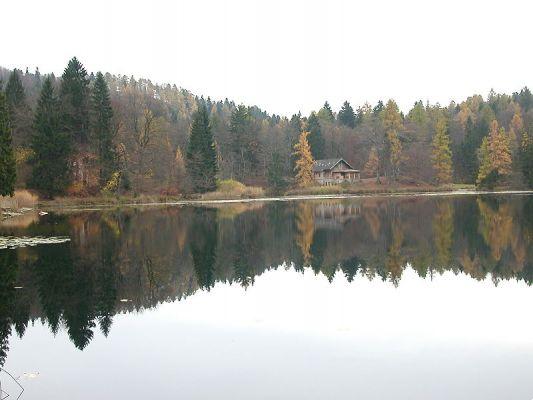A classic itinerary to get to know Dante Alighieri's House and find traces of history from Michelangelo Buonarroti, from the Uffizi to the Medici Chapels and beyond.
It is said that Stendhal, a great French scholar, on his trip to Italy, arrived in front of the Basilica of Santa Croce in Florence almost fainted. From this fact comes that syndrome we all know with his surname, or that sense of dizziness and dizziness that one feels in front of some works of art.

Of the same church, Foscolo he speaks of it in his “I sepolcri”, arguing that in front of some graves one cannot but prove a “correspondence of loving senses”. It will be this mix of emotions that, if you are a lover of travel, art and literature, you will experience in front of or inside Basilica of the Holy Cross. And it is from this church that an itinerary among the beauties of Firenze linked to two of its great inhabitants of the past: let's talk about getting to know the luoghi di Dante Alighieri e Michelangelo Buonarroti.
Santa Croce it is one of the undisputed masterpieces of Florentine art, inside you can admire an excellent architecture, sculptures, frescoes, stained glass windows and the tombs of the greats of the past. Michelangelo, Galileo, Machiavelli they rest their eternal sleep right within these walls.
No burial for Dante who went to elisio, never returned and buried in Ravenna. However, his beloved Florence dedicated a majestic funeral monument to the great poet and created a statue, in his honor, located right in front of the church.

Leaving Santa Croce you can continue on foot to Dante's House, or rather to the reconstruction of the Alighieri residence which was built in the nineteenth century (Via Santa Margherita 1), inside there is a museum that tells the life and the story of the Florentine poet. Dante himself, in "The new life”Gives indications on where his home is and points out the place where he met his Beatrice for the first time in the Church of Santa Margherita de 'Cerchi.
Around the city, then, it will be fun to find the various commemorative stone tiles, which quote verses from "The divine Comedy”Connected to that road or that particular monument. If you want to follow in the footsteps of Buonarroti you have to head towards Via Ghibelline where is the mansion that Michelangelo's grandson bought to honor the memory of his grandfather. Also in this case it is possible to visit the museum inside which it is possible to admire many of the preparatory drawings, some artifacts and direct evidence of the tormented life of this genius of the Italian Renaissance.

But first of all my advice is to go to Medici Chapels.
The New Sacristy contains the sepulchral monuments of the Medici, created by Michelangelo to honor the dynasty of the princes of his city. Buonarroti uses his genius and represents the Medici with allegories of the moments of the day: Day, Night, Dawn and Twilight.
Opening the front door, not having a progressive approaching vision as happens to the works exhibited in museums, there is a sudden sensation of amazement, especially when the eyes rest on the richly decorated marble, and on the statues so expressive as to seem ready. to come to life.
At this point you have two options. Or visit the Galleria dell'Accademia where the true David (in Piazza della Signoria there is a copy) or enter the Uffizi and look for the Tondo Doni, the moving Holy Family of Michelangelo.

Galleria dell'Accademia
Il David, with its statuary magnificence, it can be admired together with the Prisons. The latter are statues of men who free themselves from the marble as if to symbolize the effort of each of us to live. They look like unfinished works, but they are notindeed they indicate exactly what Michelangelo meant by sculpture: freeing the figures imprisoned in marble.
Uffizi Museum
You have to get to the 35 room, and look for the only painting by Michelangelo in Florence on a scarlet red wall. The work represents, in a mystical embrace, Mary, Jesus and Joseph, wrapped in brightly colored robes. Of course you can't miss the Uffizi works by Botticelli nor those of Raffaello. Then walk through the rooms and let yourself be conquered by the beauty of Renaissance art.
The last stop of these Michelangelo tours is the Bandini Pietà which is located in the Opera del Duomo museum (which will remain closed for restoration at least until the end of 2015).

Do not expect the richness of detail and the perfection of the Pietà of St. Peter and not even the unfinished end of the Pietà found in Milan.
This work represents an overall scene. In the center there is the Christ just taken down from the cross who is supported by the Magdalene, the Madonna and Nicodemus, to whom the artist himself lends his face.
When you feel a little peckish you can have one tasty break in Via de 'Georgofili from Ino. It is a small focacceria, between the Uffizi Gallery and Ponte Vecchio, which offers local products of excellent quality and sometimes highly sought after. You can find selected cured meats and cheeses, fresh vegetables and pesto in the Tuscan way and make a sandwich of your choice.
Do not give up on accompanying everything with a good glass of Chianti wine.
This is only a hundredth of what you can see in Florence, but it is certainly a good itinerary for what concerns the art and culture of Humanism and the Renaissance.























